I have always liked cameras. About 18 months after getting back into shooting film cameras, I have found that I keep returning to the Olympus 35SP. After reading an excellent article by Ken Rockwell about the Olympus 35SP, I decided to find one. A few weeks later, I found a reasonable eBay listing and decided to get it. My particular camera came in good shape, with all its parts in working order. The Olympus 35SP is a relatively small yet full featured fixed lens compact 35mm camera. It has “automatic” shooting modes but can also be used as a fully manual 35mm range finder camera.
About the Camera
The claim is that the Olympus 35SP has a fantastic lens. Its maximum aperture of f1.7 means it is among some of the fastest glass I own for my SLR/DSLR bodies. Its focal length of 42mm is just a hair wider than the standard 50mm lenses I am used to using but less wide than most point-and-shoot cameras. The controls are well laid out, and the body is quite heavy. It does fit in a coat jacket pocket, but it has to be a pretty big pocket, as it isn’t really a tiny camera. Side-by-side against my Pentax ME-SUPER with a compact 40mm f2.8 lens attached, it would be hard to determine which was smaller. The ME-SUPER prism is perhaps 5mm taller than the top plate of the Olympus, but that Olympus top plate is 15mm higher than the top plate of the ME-SUPER. The body of the Olympus is also a few mm thicker. Back to back, they are almost the same width. From the back plate to the front end of the lenses, the Olympus is perhaps 10mm shorter. Finally, I didn’t weigh each camera, but the Olympus is heavier.
The camera uses an old 625 battery that is no longer made, but I haven’t had a problem using an adapter and hearing aid battery (there are other solutions for this issue as well). The battery is only needed to power the light meter, and everything else is mechanical. The viewfinder is clear and bright. The shutter button requires a pretty long press to activate, but I think that lends itself to being very deliberate with my shots. I have yet to depress the shutter button accidentally. Every bad shot I have taken I deliberately pressed the shutter button.
When shooting in manual mode, the viewfinder displays a needle over an EV number, and you match a combination of shutter speeds and aperture values to that EV number. You decide whether you set the shutter speed first and then find the aperture for the given EV number or vice versa. I generally set the aperture first, but if I were shooting the Blue Angels or some sort of fast action, I might go the other way around. I also probably wouldn’t be using this camera though.
My biggest issue with the camera is the ease with which one can shoot images of the back of their lens cap. There is no indication whatsoever that you have left the cap on. The light meter is not through the lens or hidden somewhere ON the lens such that the cap covers it, so if you are shooting in Auto mode and the camera has enough light for the light meter, the shutter will trigger, and you have captured a perfect frame of nothingness. If you are shooting in Manual mode the shutter will always fire, and like Auto mode, the EV needle dutifully records how much light it sees even with the lens cap on the lens. My solution, which helps somewhat, was to use a lens cap strap to which I stitched a rubber cap from something (not sure what) that happens to fit snuggly over the shutter button, and I try to remember always to put this over the shutter when I attach the lens cap. It has helped, but I still capture the inside of my lens cap at least once a roll.
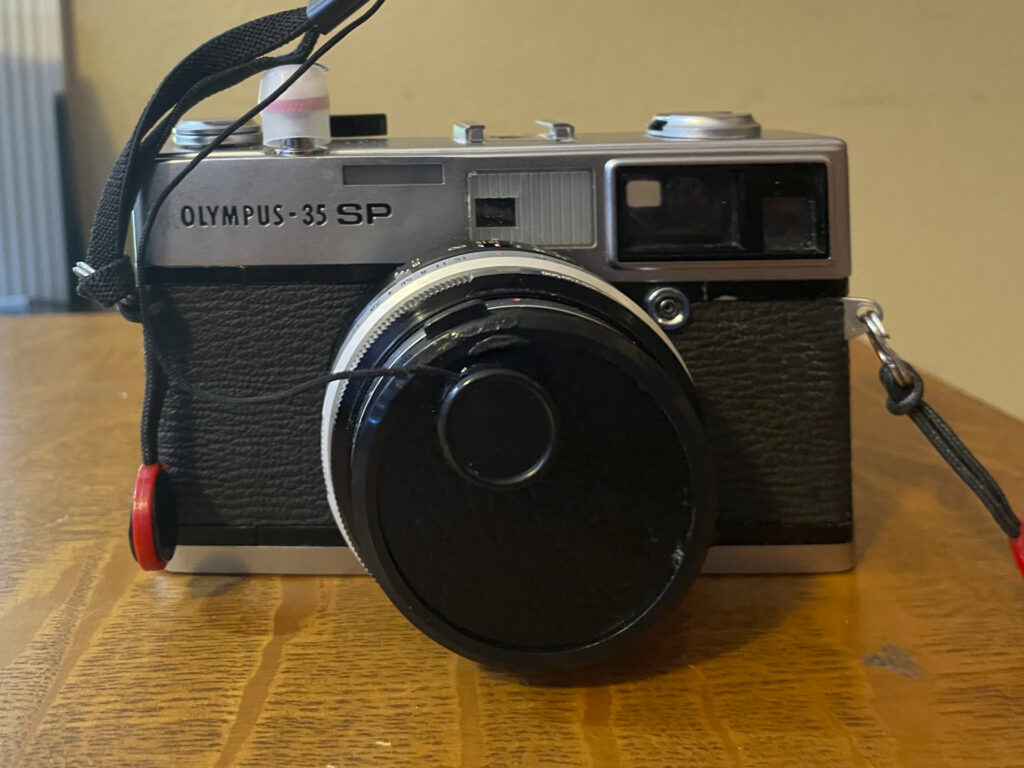
My Use of the Olympus 35SP
As alluded to above, my motivation for acquiring the camera was to have a small and reliable camera that I could carry easily. I didn’t want to have choices regarding the lenses to carry and which camera bag I would put everything in. I wanted to grab it, stuff it in a fanny pack or coat pocket, and have it ready to shoot. As a result, I am more likely to have this camera with me, so I tend to shoot it more often than others. It’s also not thousands of dollars worth of camera and lens, so I tend to take it places where I might not be all thate careful, like carrying it with me when I ski. All of this brings me finally to the images themselves.
Late Spring Ski Trip
This particular roll of film, Arista EDU Ultra 400 Black and White Negative Film, was shot on a ski trip with friends and family. The film was processed locally, and the negatives were then scanned using a Plustek OpticFilm8200i film scanner. Unfortunately, there appear to have been a few scratches imparted on the negatives either in the camera or during processing. I have tried flipping the film around 180 degrees, and the horizontal lines on the film move positions, so this indicates the problem is with the negatives themselves. On this trip I took some scenery shots and personal snap shots of friends and family. It’s the former category, landscapes and scenery, that I am sharing today.
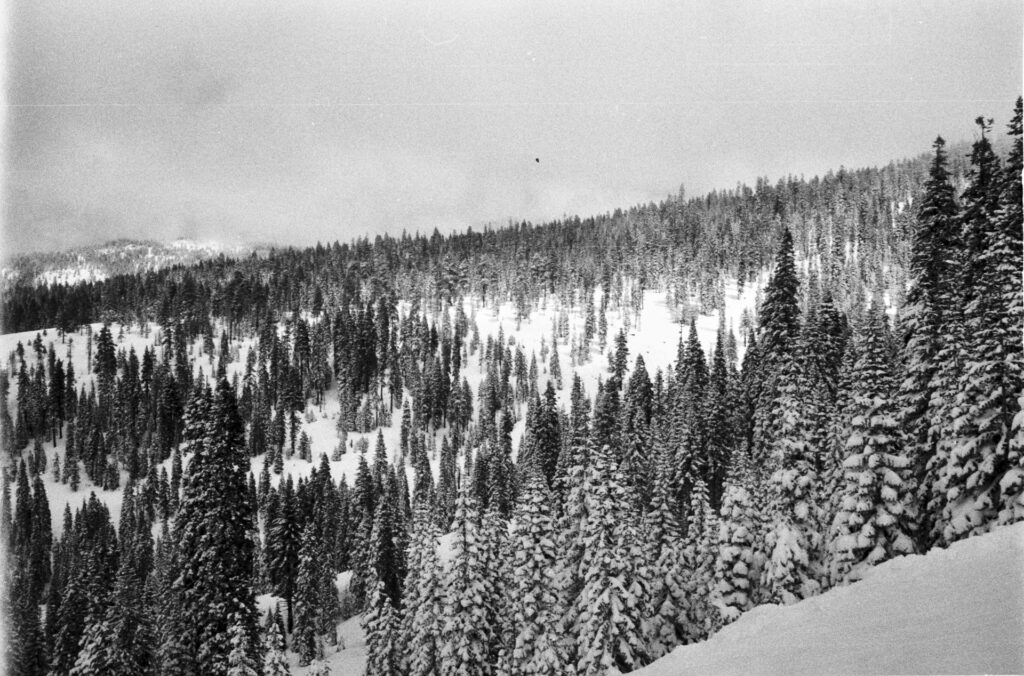
The field of view using this 40mm lens captures a nice portion of the mountain. Though late in the ski season, a fresh dump of snow a few days earlier meant the trees still had a significant amount of powder on them.
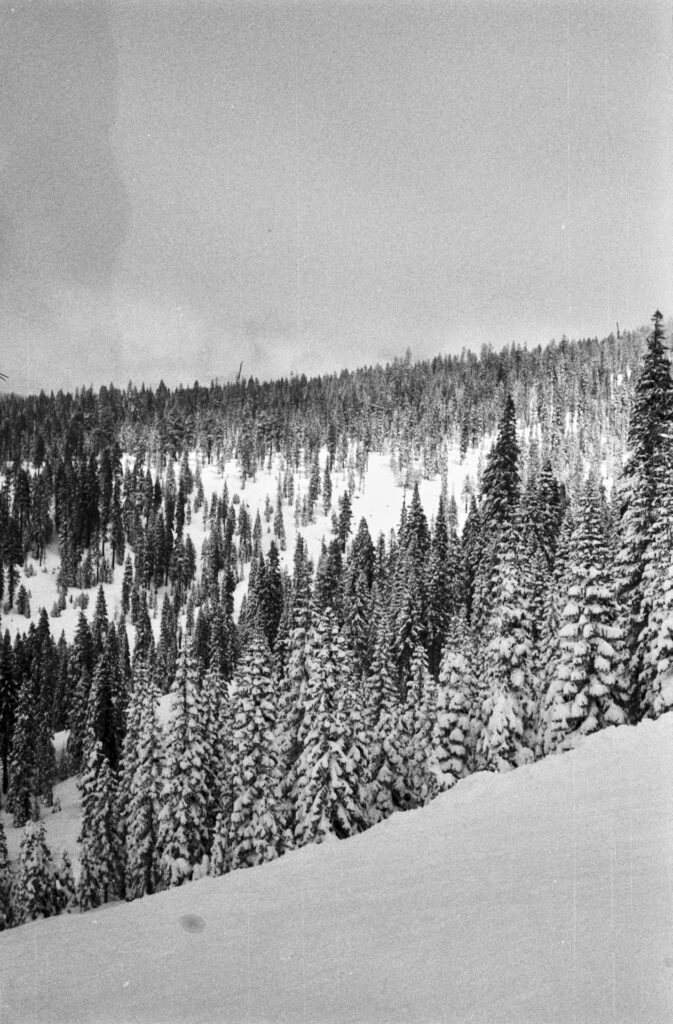
Same location showing more foreground.
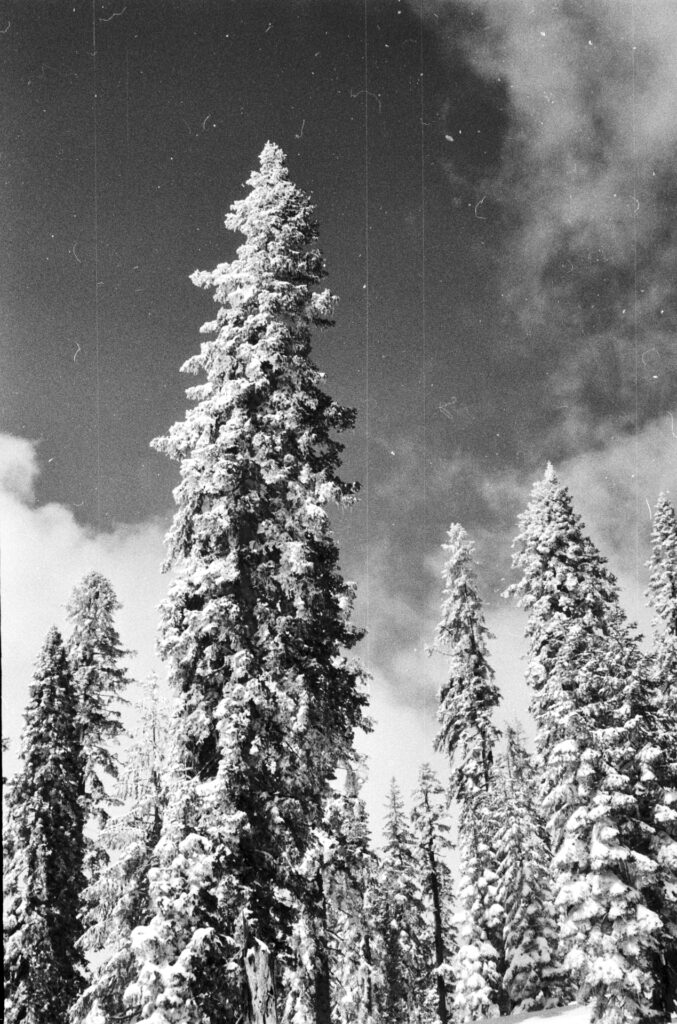
This large pine tree was covered in snow and dwarfed the others around him. Unfortunately, this negative really shows the dust and scratches.
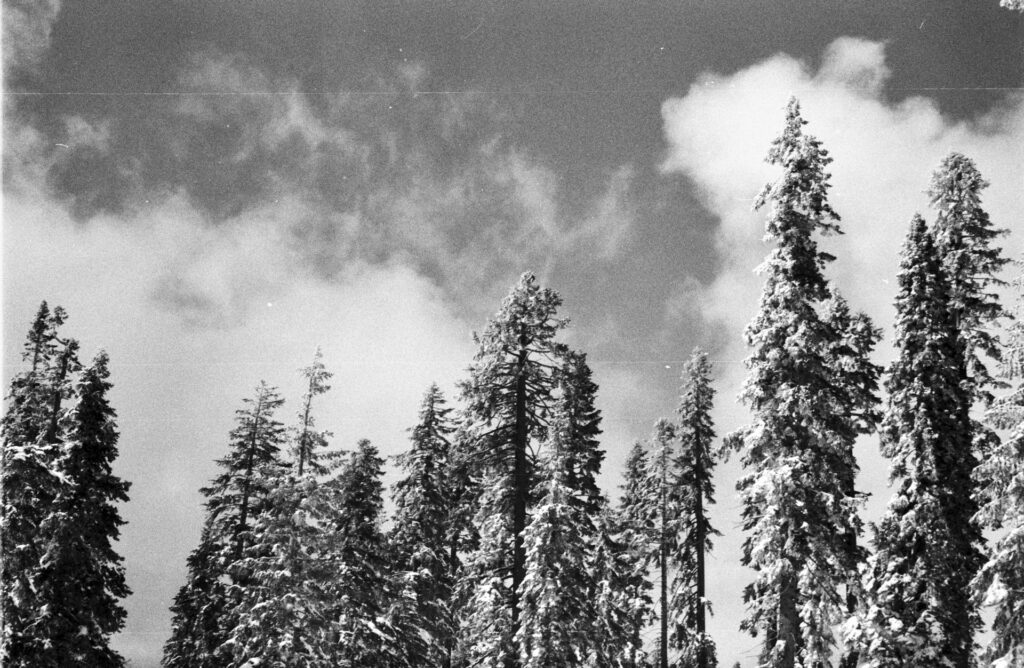
A different view of the trees in the forest.
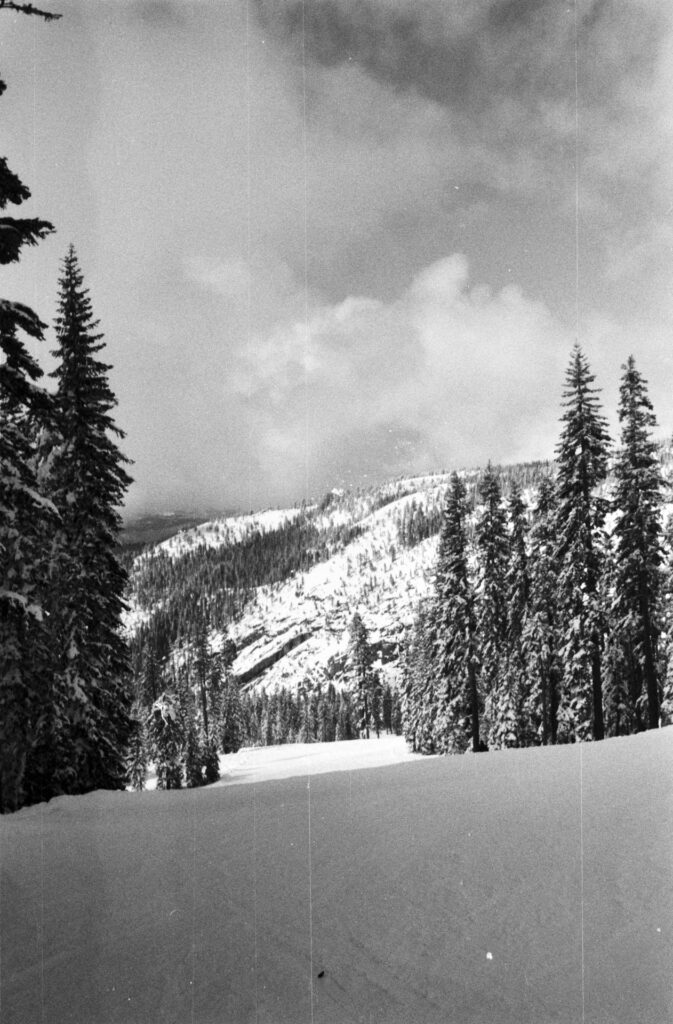
One of our favorite runs of the day at Dodge is the one with the beautiful scenery, wide open space, and fun.
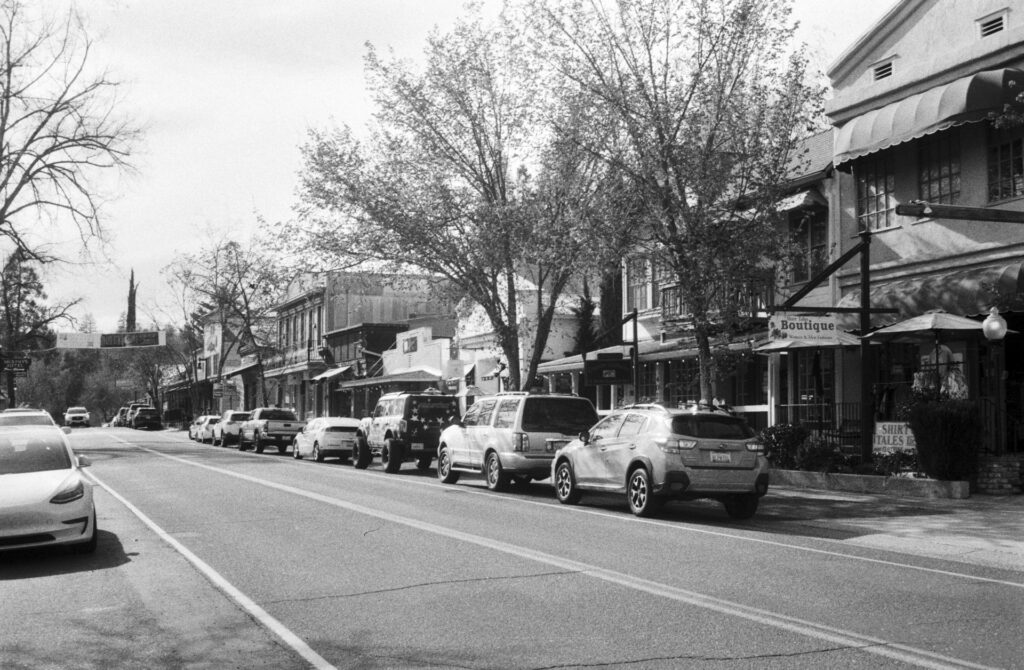
The Sierra mountain range in California offers visitors plenty to do. In the winter, lots of skiing. Camping, hiking, white-water rafting when its warmer. But if you want to taste some wine or have a great meal at a nice restaurant, you can hardly go wrong in Murpy’s.
Summary
My answer for why I have started shooting with film again (which I may have read here on this site first, but regardless, it is paraphrased from someone else) is that I choose to shoot film because of its inconvenience and high expense. The real reason is that I take better pictures when I slow down, and I have a stronger connection to the photos I take. I like flicking through the prints and scanning the negatives. I still shoot with my Pentax K-1ii DSLR and often carry a particular film SLR with it, but that preferred companion SLR is a future topic (spoiler alert, Pentax MZ-3).
About Me
As a pre-teen, I started my photography journey with a hand-me-down Brownie 120 and an Argus C3 35mm. I had a home darkroom as a teenager and, over the years, have owned a series of different cameras, most of them Pentax bodies. I currently have a bad “gear acquisition” problem and have built up a large collection of camera bodies that I have to pick and choose a combination of lenses and bodies suitable for wherever I am going. This site does not help. I cannot recall reading a “5 frames with” that didn’t feature a camera I would like to try. Speaking of which, I wonder if that Olympus XA I bought last week has arrived yet. You can find some of my photos on flickr
Share this post:
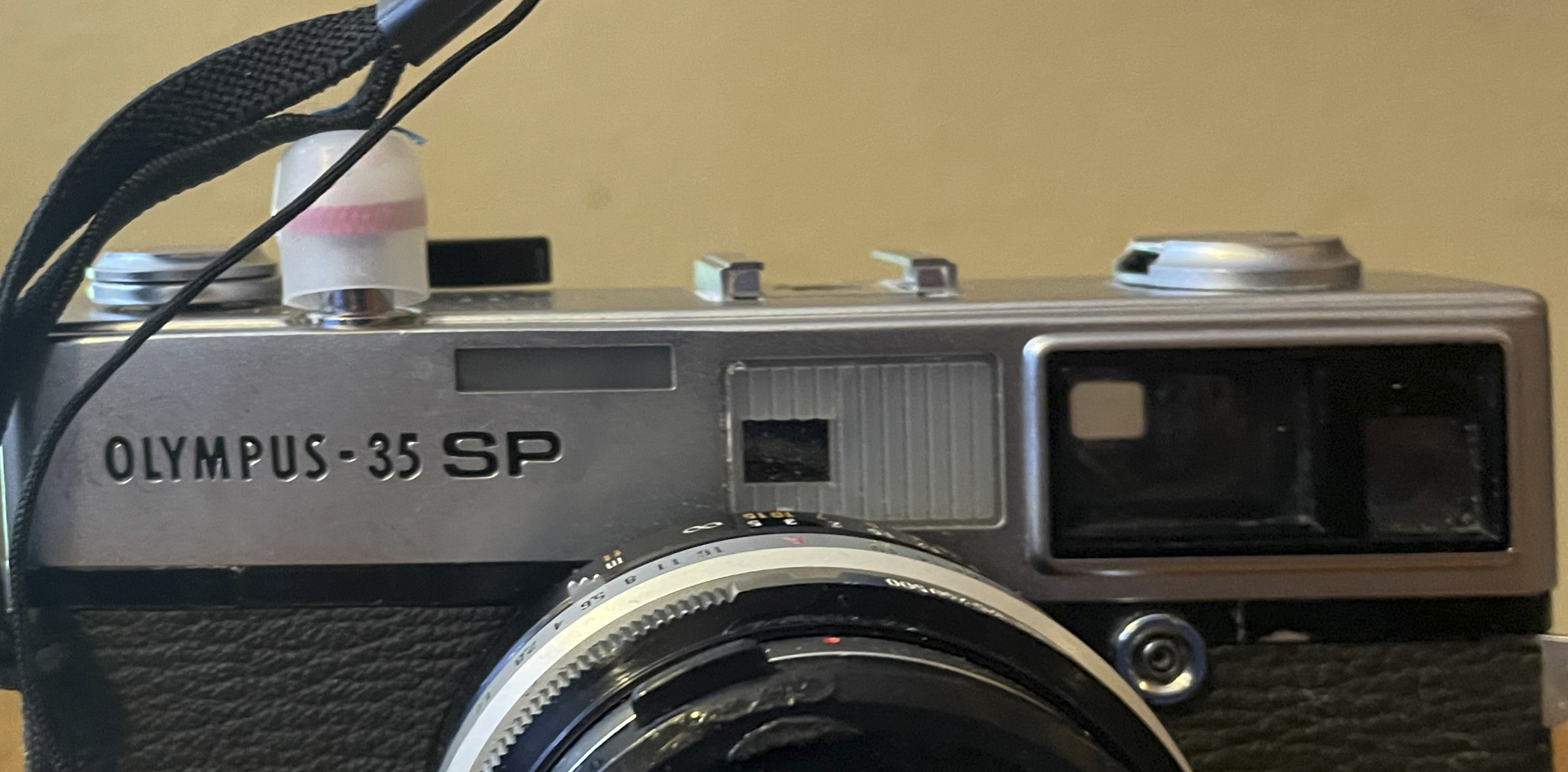
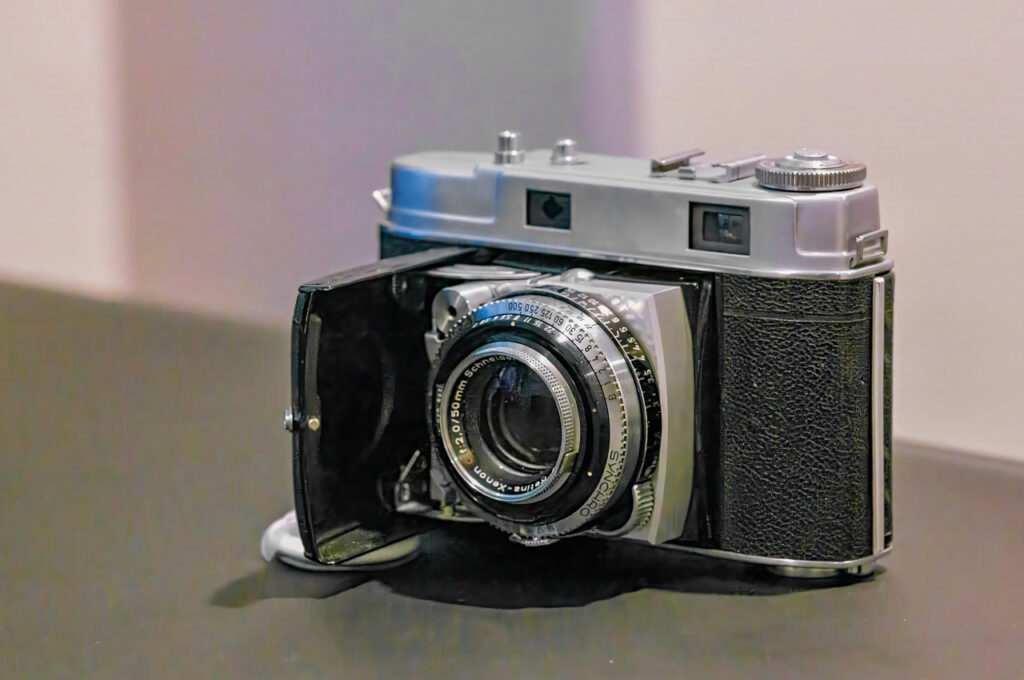
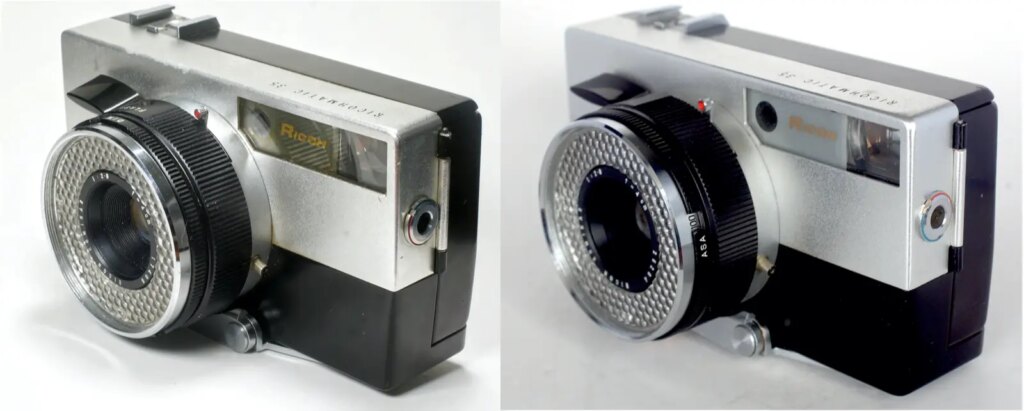
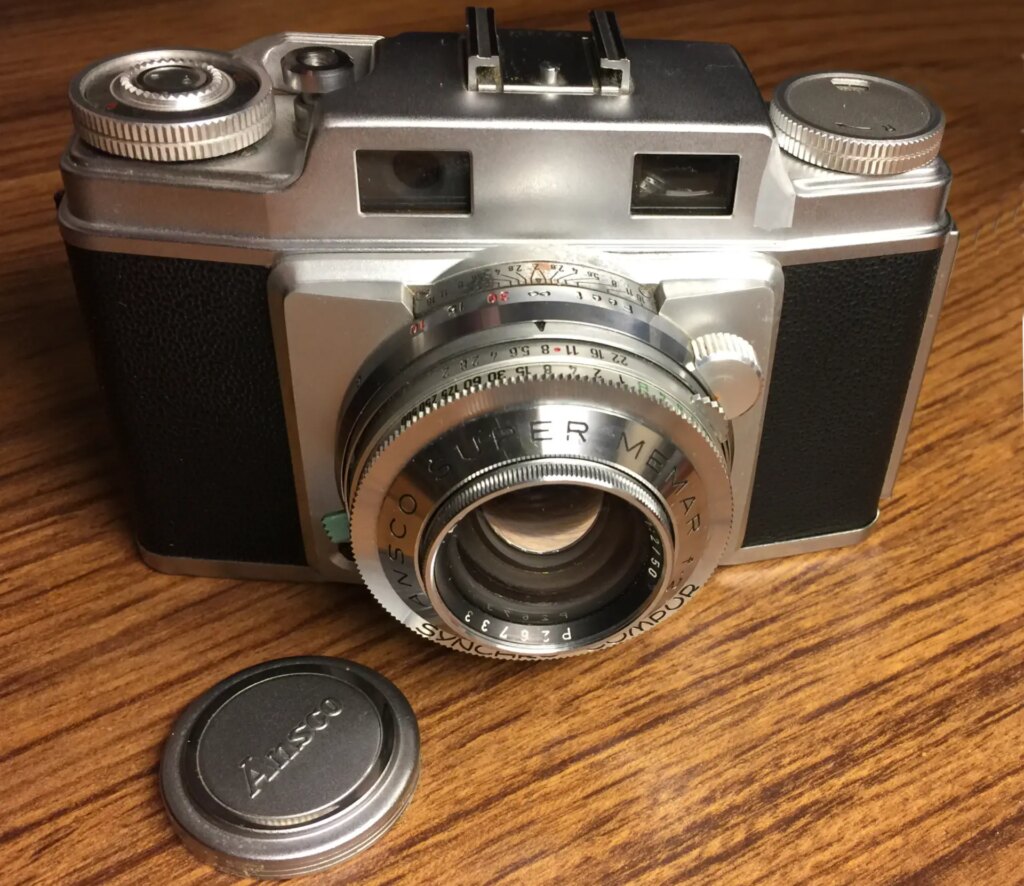
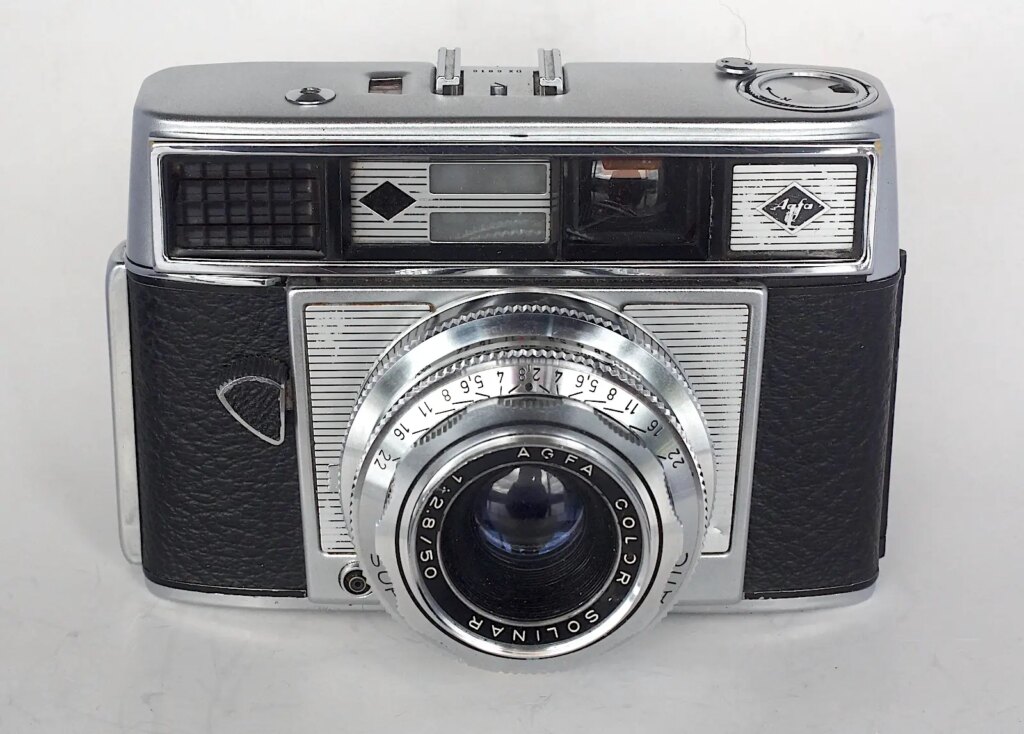





Comments
John Earnshaw on Olympus 35SP – A 5 Frame Mini-Review
Comment posted: 28/06/2024
Bob Janes on Olympus 35SP – A 5 Frame Mini-Review
Comment posted: 28/06/2024
Comment posted: 28/06/2024
Mark Ellerby on Olympus 35SP – A 5 Frame Mini-Review
Comment posted: 28/06/2024
Nice sharp pictures anyway. Funny how the last one doesn't have the lines over it. I wondered if the lines could have been from a squeegee that got some grit trapped in it, just a guess though.
Shannon Ware on Olympus 35SP – A 5 Frame Mini-Review
Comment posted: 30/06/2024
Comment posted: 30/06/2024
Comment posted: 30/06/2024